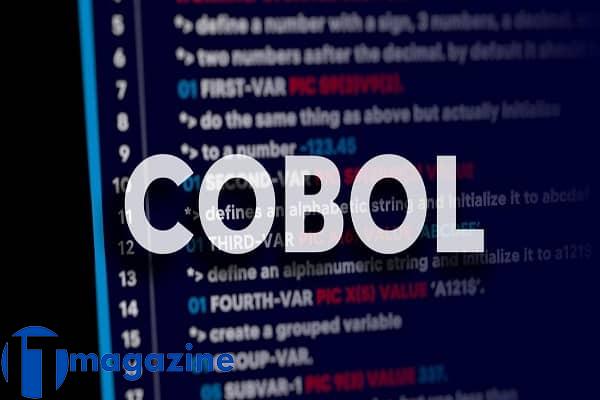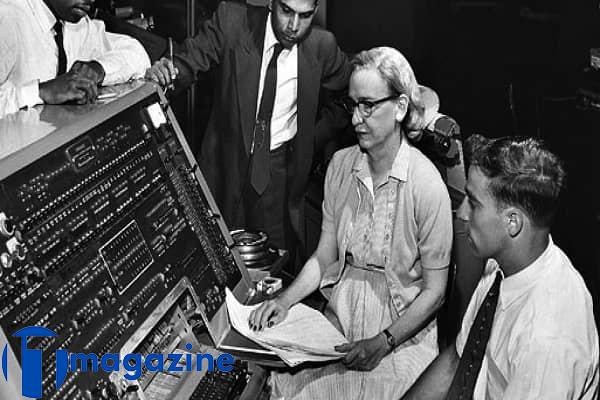COBOL is a business-oriented compiled English-like computer programming language. It’s an imperative, procedural, and object-oriented language. COBOL is a programming language primarily used in company and government business, financial, and administrative systems.
You can read the other articles on the itmagazine to learn about the latest news and also to see other related articles.
The story of COBOL
According to the story of COBOL programming, the language was created as part of a project funded by the US Department of Defense and including a group of computer corporations such as IBM, Honeywell, Sperry Rand, and Burroughs. The goal of COBOL program was to show that COBOL is a programming language that possessed the following characteristics:
- Portability between computer systems makes software migration easier across generations of hardware as well as between hardware manufacturers.
- More English-like syntax than other languages at the time, even if at the price of some operational speed, to encourage programming by a wider audience.
- The ability to adapt to changes in the language in the future.
Read more: What is the DevOps platform

In 1960, the first formal COBOL standards were published
The goal of COBOL program was to become the standard for creating corporate programs during the decades, much to the chagrin of its detractors. One factor for COBOL’s rapid growth was network effects: IBM, one of the language’s original contributors, became an active early adopter, and IBM’s dominance in the computing world aided COBOL proliferation.
COBOL has outlasted the initial systems it was designed for by a large margin
The story of COBOL programming indicates that it happened due to its architectural benefits and heavyweight industry backing. COBOL was the most extensively used programming language in the world by 1970, according to various estimates. COBOL was estimated to be used in 80 percent of corporate applications by 1997.
COBOL is a programming language
COBOL’s creators defied the succinct syntax of other programming languages at the time. The goal was to design a programming language that non-programmers, notably accounting, finance, insurance, and other business professionals, could read and understand. This code is verbose for current software engineers used to the brevity of languages like Python. However, COBOL’s verbosity stems from the same premise that underpins current languages like Python: code is read far more than it is written, so it should be intended to be readable.
The syntax and internal organization of programs in COBOL are very rigid
A COBOL program is separated into sections, or divisions, to make it easier to find and understand its components quickly. COBOL has very tight code style restrictions, right down to the amount of spaces before an instruction. Some of these limitations are a result of COBOL’s development during the 1960s mainframe era, when programs were encoded on punched cards and the proper formatting of 80-column lines was critical. Other formatting constraints, on the other hand, ensure readability.
Read more: The Kensington StudioDock review: the additional apple watch charger

The goal of COBOL program stringent regimentation is to make them as self-documenting as feasible. After all, COBOL programs were known to last for years or even decades. The goal was to make any COBOL program a readable artifact for every COBOL coder.
Challenges in COBOL
The fact that COBOL applications, once created, tended to be left in place forever with only minimal adjustments, accounts for much of COBOL’s enduring popularity—and inertia. The less likely an app was to be disrupted, the bigger and more mission-critical it was. Mainframes, such as IBM’s, played an important role since they were designed to be highly backward compatible and run legacy software—such as COBOL applications—across generations of hardware with minimum changes. As a result, billions of lines of COBOL code have remained almost untouched for decades.
COBOL has changed through time, although slowly. It even has an object-oriented variation, which supports current features like Unicode, locales, and data types other than strings and integers. However, because COBOL prioritizes backward compatibility, even these enhancements and extensions must be compatible with existing COBOL applications.
COBOL programmers haven’t always approved of the language’s design choices
Some have resulted in extremely complex programs that are difficult to comprehend or debug, making rewrites or upgrades difficult. COBOL’s GO TO command, like C’s, enables programmers to roam around freely within a program, allowing them to design more sophisticated applications. However, if GO TO is used carelessly, it can turn a COBOL program into a rat’s nest of difficult-to-trace cross-references.
For decades, COBOL has been a mainstay of commercial computers, and the demand for COBOL programmers is only increasing. If you’re interested in maintaining or updating COBOL programs, now is a better time than ever to get started.











Comment here